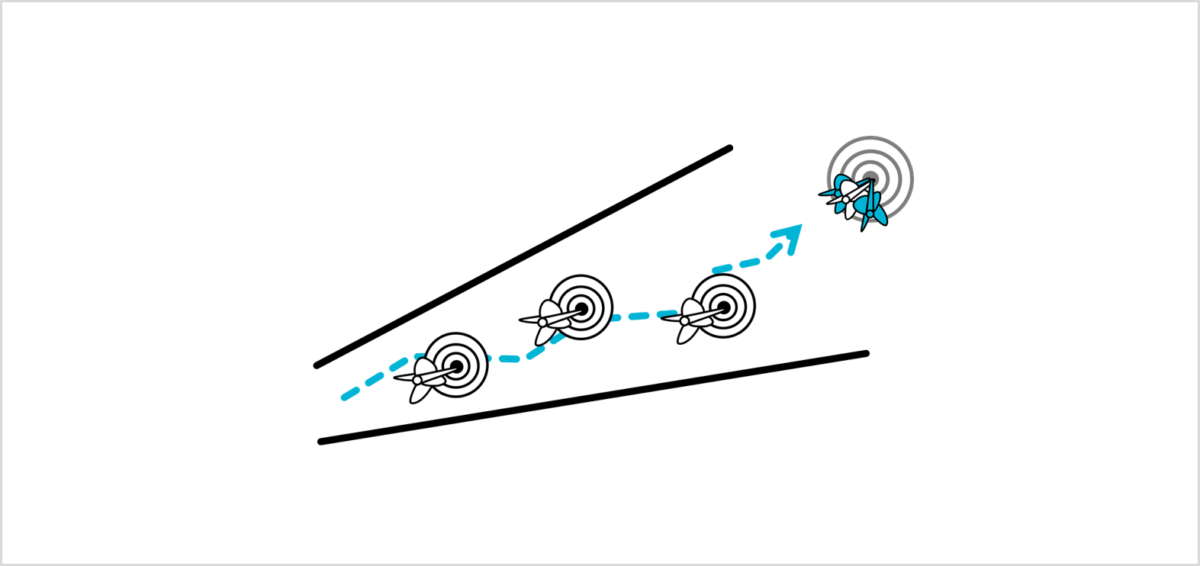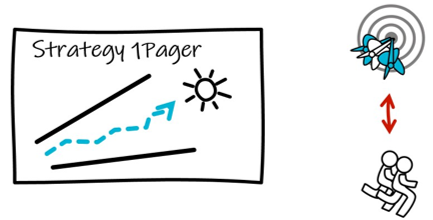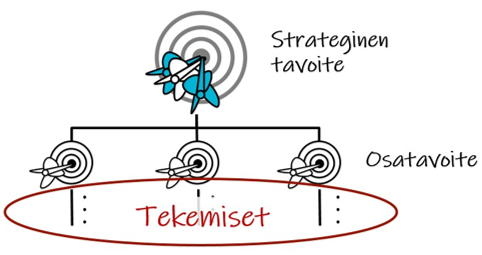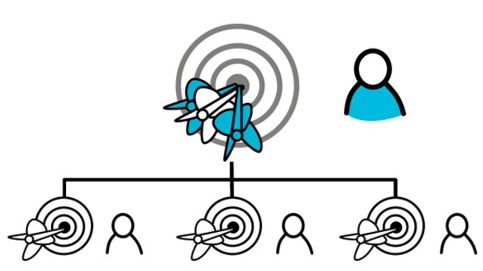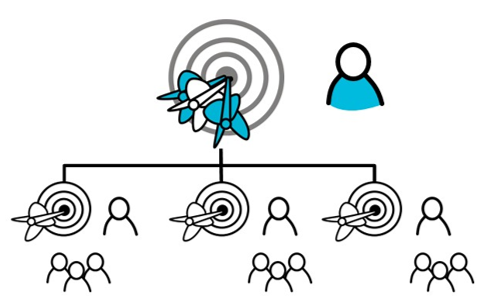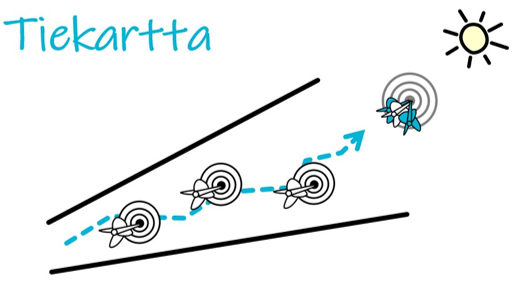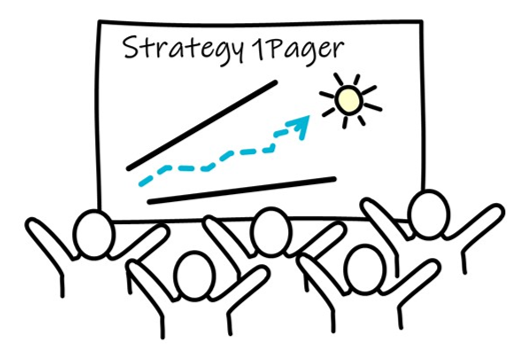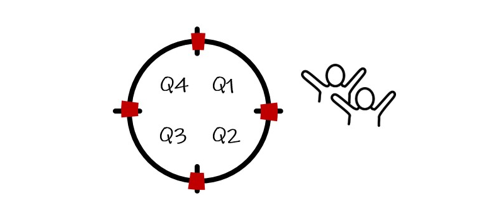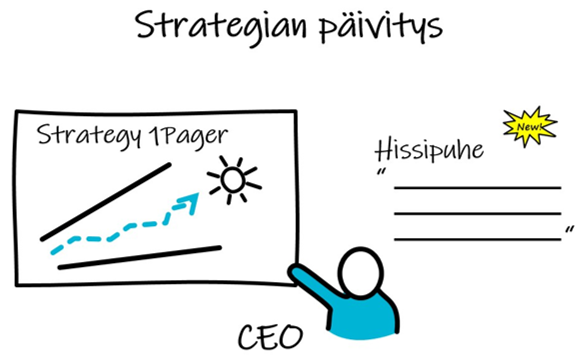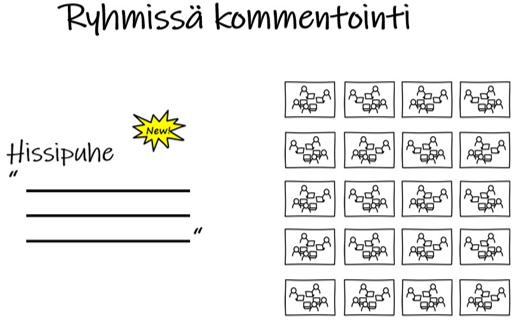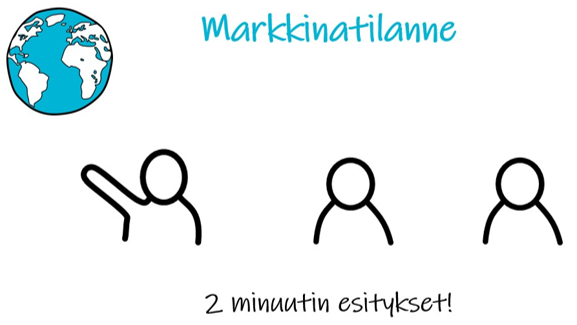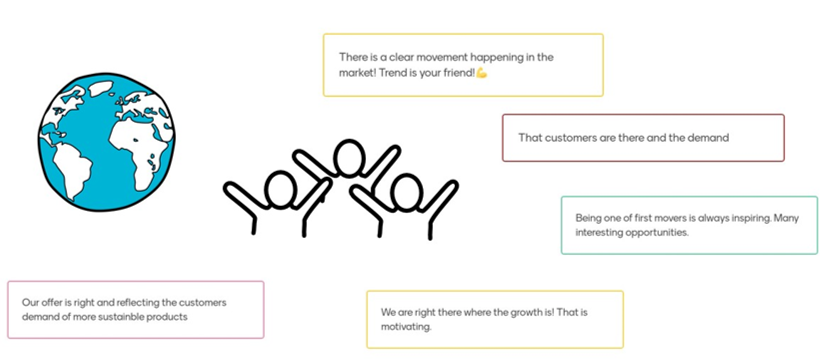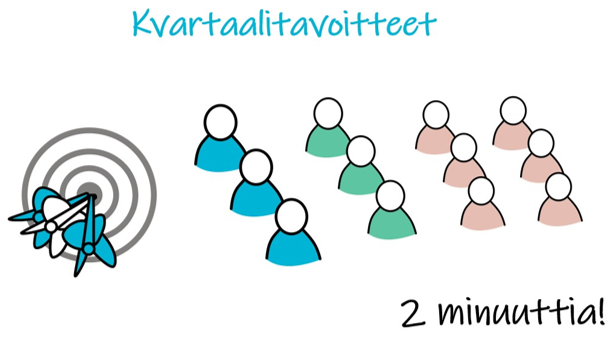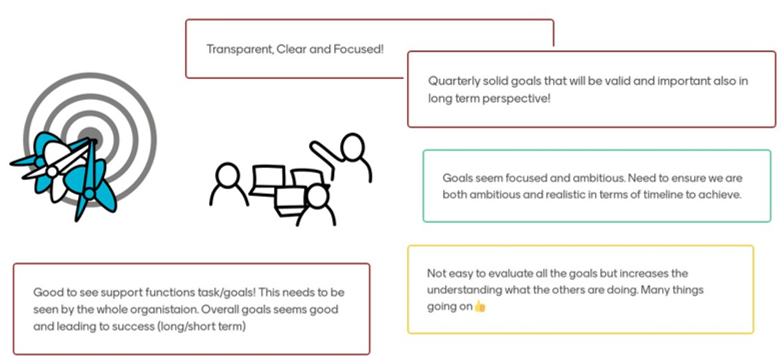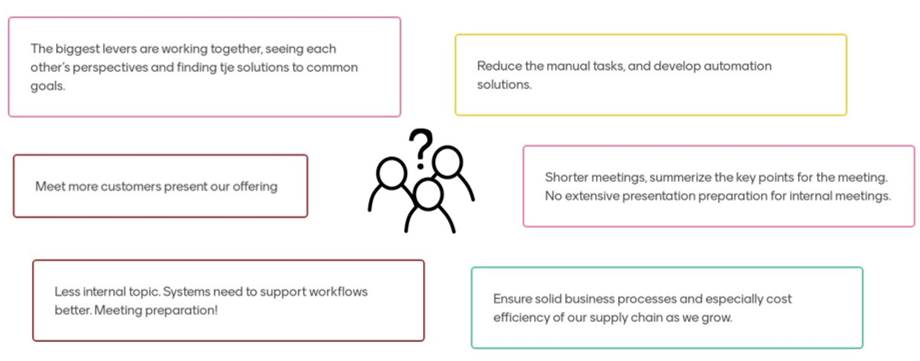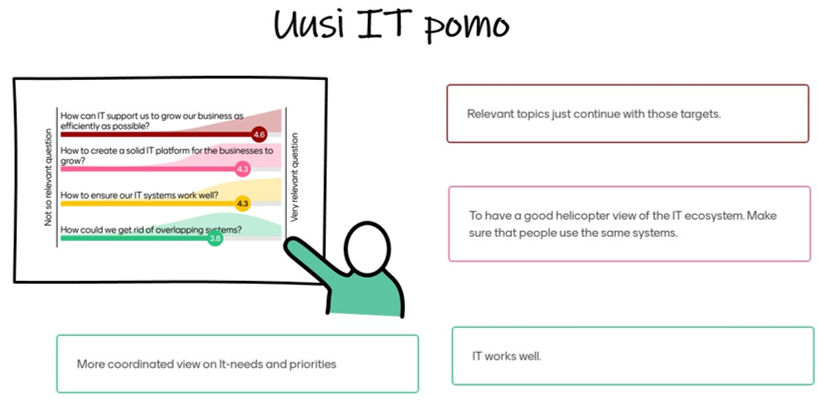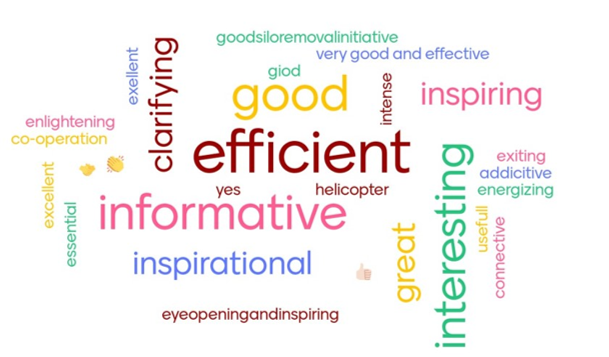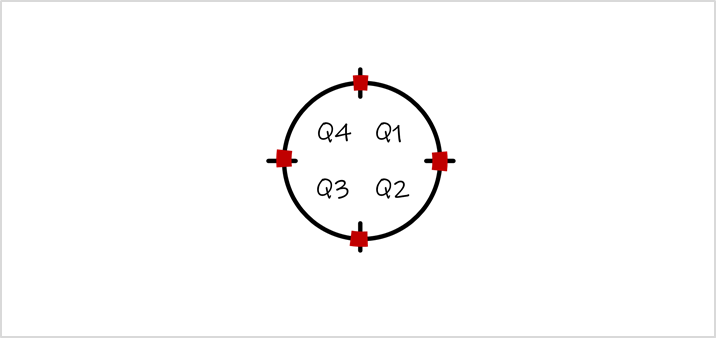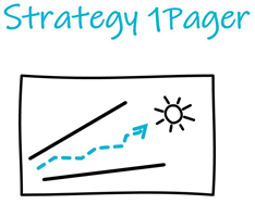5 lääkettä henkilöstön hermostuneisuuteen
Tällä kertaa puhun hyvin ajankohtaisesta aiheesta, joka on henkilöstön hermostuneisuus. Olen huomannut, että ihmiset ovat hyvin hermostuneita tällä hetkellä, kuten varmasti tiedät. Syitä on monia, mutta koronatilanteen purku on tietenkin tärkein. Kyse on turvallisuudesta ja yrityksen selvitymiskyvystä, tilanteesta. Näytän nyt yksinkertaisen yhteenvedon tästä aiheesta, ja 5 lääkettä henkilöstön hermostuneisuuteen.
Tilanne
On asiakkaita, joilla menee todella huonosti tällä hetkellä. Etätyöskentelyn takia henkilöstö pelkää jäävänsä jälkeen ja jopa oman työpaikkansa puolesta. He tekevät hirmuisesti töitä, jotta kokisivat olevansa turvassa. Se taas on johtanut siihen, että moni tekee liikaa töitä ja voi saada burnoutin.
Sitten on yrityksiä, jotka kasvavat ihan hirmuisesti. Meillä on siis aika voimakas polarisaatio meneillään. Se mikä tässä on mielenkiintoista on se, että molemmille yritystyypeille on ilmaantunut sama ilmiö: Iso osa työvoimasta miettii työpaikan vaihtoa. Tämä on poikkeuksellisen suuri juttu! On tehty tutkimuksia, että globaalistikin 41% työntekijöistä pohtii työpaikan vaihtamista. Suomessa vastaavaa tutkimusta ei ole tehty, mutta Yhdysvalloissa tilanne on jo 55%.

Tässä on aito liiketoimintariski! Liiketoiminnan jatkuvuuden riski. Henkilöstöihmiset ovat todella tietoisia tästä, mutta jollain tavalla olen aistinut, että henkilöstöihmisillä on vaikeaa myydä tätä ajatusta bisnesihmisille, että nyt pitäisi tehdä jotakin eri tavalla.
Nyt näytän viisi lääkettä tähän hätään. Osa on isompia asioita, ja osa nopeasti toteutettavia.
1. Rauhoittelu: Strategia kestää
Ensimmäinen asia on rauhoittelu. Minulla on juuri nyt yksi asiakas, joka mainostaa fantastista strategiaansa, joka kestää tämänkin taiston. Heillä on ollut vaikeita tilanteita ennenkin ja he ovat ratkaisseet ne yksi toisensa jälkeen, aivan kuten nytkin. Ihmiskunta on niin ihmeellinen, että se ratkaisee aina suuretkin ongelmat.

Toinen asia on se jos huomataan, että strategiaa ei oikeastaan olekaan tai se on hyvin epäselvä. Tätä tilannettahan voi nyt käyttää hyväkseen siten, että upgreidataan strategia, kuten englanniksi sanotaan. Nostetaan se seuraavalle tasolle! Se tarkoittaa että tekemistä priorisoidaan voimakkaasti.
Strategiatyön paikka voi olla juuri nyt! Se vähentää hermostuneisuutta, kun ihmiset näkevät pidemmän aikavälin pohdintaa. Uskon, että kysymys on hyvin paljon turvallisuudesta: Onko turvallista olla tässä yrityksessä töissä, vai pitääkö vaihtaa? Nyt viestintä ja yleinen ilmapiiri on ehkä keskeisempää kuin koskaan.
2. Lisää ihmisläheisyyttä
Eräs henkilöstöjohtaja sanoi, että bisnestä pitäisi humanize. Mitä on ihmisläheisyys työpaikalla? Se on hyvin paljon sitä, että esihenkilö kuuntelee ihmisten tilanteita!

Toinen tarve on tuki ja kannustus. Nyt on sellainen paikka, että tukea ja kannustusta pitää lisätä poikkeuksellisen paljon. Pii on hyvä kerroin! Kertaa piillä se, mitä olet tehnyt ennen. Lisää ihmisläheisyyttä! Pois johtajamaskit ja ollaan vaan omat itsemme. Silloin ihmisläheisyyden painoarvo nousee. Kun firmassa puhutaan isoista tavoitteista, henkilöstö jätetään usein viimeiseksi kasvun ja tuloksen jälkeen. Entäs jos henkilöstötavoite olisi nyt ykkönen? Ja vasta sen jälkeen kasvu ja kannattavuus. Ihan siksi, että bisnesriski on nyt niin iso.
Olen myös sanonut henkilöstöihmisille, että puhukaa nyt liiketoiminnan kieltä. Henkilöstöihmiset tekevät hienoa työtä, mutta mielestäni on aina ongelma, että liiketoimintanäkökulma jää liian kevyeksi. Bisnesihmiset voivat kokea sen pehmokieleksi, vaikka se tietenkin on kaikista kovin juttu. Numeroihmisillä on helposti eri prioriteetit, henkilöstö on listassa viimeisenä.
Nostetaan siis yrityksessä ihmisläheisyyttä kolmen tärkeimmän asian joukkoon!
3. Kirkkautta tehtäviin
Seuraava operatiivinen asia on tehtävien kirkkaus. Sen puute, voi lisätä hermostuneisuutta. Elävä digitaulu on tähän hyvä työkalu. Siinä on tavoitteet, jotka kaikki näkevät, ja tavoitteiden alla tekemiset. Tehtävät merkitään liikennevaloin indikoimaan mitä tehtävälle kuuluu. Kukin tietää mitä tehdä. Pointti on se, että tehtävätilanne saadaan visualisoitua! Silloin syntyy kirkkautta tehtävään.
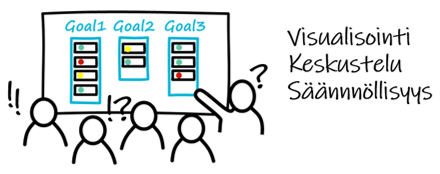
Ja pitää keskustella tilanteesta. Kuten IT-puolen scrumissa kokoustetaan ihan päivittäin aamuisin 15 minuuttia. Ollaan läsnä ja kaikki voivat katsoa ja kuulla mikä tilanne on. Säännöllisyys luo turvaa! Hermostuneisuus vähenee. Erittäin keskeinen juttu, ja tämän voi tehdä nopeasti. Ei ole iso homma!
4. Oma hybridimalli lähi/etätyölle

Oletko työpaikalla vai kotona? Mikä on muuten on lähellä ja mikä etänä? Riippuu katselukannasta. Henkilöstön kannalta kotona työskentely on lähityötä. Toimistoon meneminen on etätyötä. Ehkä meidän kannattaisi vaihtaa näkökulma ja olla enemmän henkilöstölähtöisiä. Kun kilpailu heistä kiristyy, tämä voi olla hyvä tapa erilaistua.
Töissä on paljon ihmisiä, jotka ovat kaikki kaukana toisistaan. Meidän pitää oppia toimimaan puitteissa ja luoda oma malli, ”Pelikirja”. Johto voisi sanoa näin:
“Luodaan meille oma malli tehdä töitä. Tässä on ensimmäinen ehdotus pelisäännöiksi, työstetään niitä paremmiksi yhdessä. Luomme itsellemme Pelikirjan. Ja se ei ole staattiinen. Pelikirjan pitää elää, muuttua meidän tarpeiden mukaan heti. kun olemme tajunneet, että on olemassa tapa. Mikään ei saa olla hakattu kiveen. Kukaan ei voi ennustaa, mitä tarvitaan seuraavaksi. Kuunnellaan herkällä korvalla asiakkaita ja reagoidaan nopeasti. Kutsumme teidät kaikki mukaan Pelikirjan rakentamiseen.”
Tämä on erittäin kova juttu! Me siirrymme uuteen hybridimaliiin, jossa kukin yksilö ja tiimi virittää itsellään optimaalisen tavan tehdä työtä. Sallikaamme siis se!
5. Visiosta voimaan

Kun tämä harjoitus tehdään yhdessä, se energisoi porukkaa huomattavasti. Syntyy halu olla mukana tällä merkittävällä matkalla. Ihmiset kokevat matkan innostavaksi, ja on hienoa sitä toteuttamassa. Vastaamme kysymykseen MIKSI me tätä hommaa tehdään. Vastataan kysymykseen asiakkaan näkökulmasta. Kun asiakas voi hyvin, ja henkilökunta kokee onnistuvansa, silloin omistajatkin voivat hyvin. Rahaa tulee korvauksena panostuksesta ja yhteiskuntakin kiittää.
Vedetään visiosta voimaa, rakennetaan yhdessä visiokonsepti! Lennetään aikakoneella viiden vuoden päähän ja katsotaan, mitä hienoa olemme saaneet aikaiseksi. Sitten rakennetaan roadmap, tiekartta, miten sinne päästään. Kun käytämme digitekniikkaa, voimme tehdä sen kustannustehokkaasti suurellakin porukalla.
Hyvä ystävä, tässä oli 5 lääkettä henkilöstön hermostuneisuuteen:
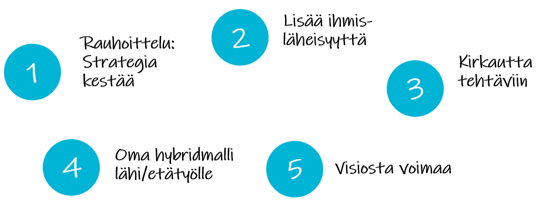
1. Rauhoittelu. Jos strategia kestää ja ei ole selvä, tehdään uusi.
2. Lisää ihmisläheisyyttä. Nostetaan ihmiset ykkösteemaksi. Nyt kannattaa, koska muuten riskinä on että parhaimmat tyypit lähtevät.
3. Luodaan kirkkautta arkitehtäviin. Luodaan yhteinen ohjaustaulu!
4. Rakennetaan oma hybridimalli ja Pelikirja lähi- ja etätyölle
5. Otetaan visiosta voimaa. Nostetaan työn merkityksellisyyttä.
Mitäs sanot? Siinä muuten paketti! Tämän kun teet, niin silloin yritys lähtee lentoon ja strategia tulille! Eikö ole innostavaa? Maailma on niin täynnä mahdollisuuksia. Aina on pelkoja, mutta nyt kannattaa vähentää hermostuneisuutta ja luoda innostuneisuutta!
Tsemppiä! Palataan.
Laita strategia tulille!🔥
Viimeaikaisia blogeja
Markus Westerlund on Rdigon perustaja ja strategiakonsultti. Hän on 25 vuoden aikana fasilitoinut toistasataa strategiaprosessia, ensiksi asiakkuusstrategioita vuosina 1996-2007 Vectia Oy:n toimitusjohtajana ja vuodesta 2007 liiketoimintastrategioita Rdigossa. Corporate uransa hän teki Nokian palveluksessa ensin tietoliikennepuolella ja sitten IT puolella Nokia/ICL Datassa. Markus on DI.
Rdigo on senioripartnerien strategia boutique. Erikoisuutena on laajasti osallistava strategiaprosessi tehokasta digifasilitointia hyödyntäen, nykyajatusten voimakas haastaminen, strategian yksinkertaistaminen ja ketterä strategian implementointi.




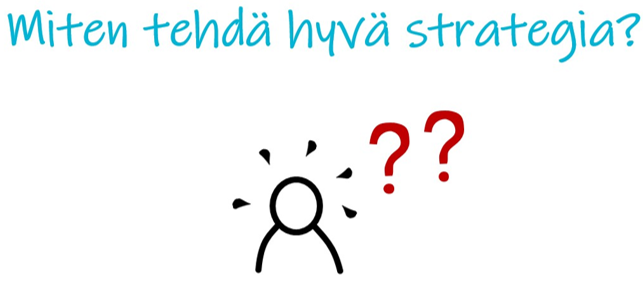







 Jos haluat pysyä ajan tasalla uusimmista keisseistä ja ahaa-elämyksistä, liity
Jos haluat pysyä ajan tasalla uusimmista keisseistä ja ahaa-elämyksistä, liity